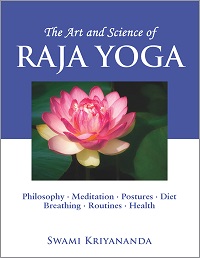 Excerpted from: The Art and Science of Raja Yoga, by Nayaswami Kriyananda
Excerpted from: The Art and Science of Raja Yoga, by Nayaswami Kriyananda
Transcendence is the goal of life. Rest is the goal of action. Breathlessness is the final goal of all breathing exercises. Spirit is the eternal silence out of which all sound and vibration are born. Deep yoga practice is not possible until superficial movements, including the movements of breath, have been stilled, leaving the mind free to soar in superconsciousness.
That the breath can be stilled may be seen from the fact that man breathes in proportion to his body’s need to cleanse itself of broken-down cell tissues. After running a race, or while experiencing intense emotion, one breathes more heavily. The body’s need for oxygen is greater at such times. In deep sleep, on the contrary, the breath becomes slow because the body’s need for it is slight.
You may already have observed in meditation that there are times when your breath ceases to flow. At such times the beginner is often afraid. There is no need for such fear. One has simply relaxed so deeply that very little carbon is being formed in his body, to be thrown out by the lungs as carbon dioxide. When the yogi becomes calm within, he can remain breathless (and more fully conscious than would be possible in a normal physical state) for long periods of time.
Hatha Yoga teachings often stress Kumbhaka, or the forcible retention of the air in the lungs. This is artificial breathlessness unscientifically, and sometimes even injuriously, induced. Breathlessness should be, rather, a perfectly natural outgrowth of complete inner calmness and relaxation.
After practicing the breathing exercises, go into inner stillness. Feel the connection between your breath and the Cosmic Breath, as if your breath were but a function of the breezes of cosmic consciousness. In your breathing, as in your working, feel that you are an instrument of the Divine.
The Raja Yoga Intensive is Ananda’s most popular and most comprehensive experience of the meditative techniques, exercises, and philosophy of the science of yoga. The Art and Science of Raja Yoga serves as the primary text for the course as well as for Ananda’s Home-Study program.
Copyright 2012 Hansa Trust